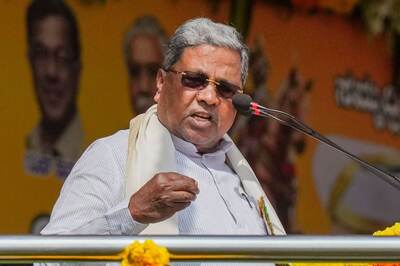
views
The Centre is planning to roll out a mega drive in order to ensure that the welfare schemes launched since 2014 reach maximum number of beneficiaries ahead of the 2024 Lok Sabha elections.
‘Viksit Bharat Sankalp Yatra’ will take place in 2.7 lakh panchayats across the country after Diwali.
In a recent Cabinet meeting, Prime Minister Modi instructed all ministers to ensure that the “deserving beneficiaries” are reached out faster.
Since 2014, a slew of welfare schemes has had a transformative impact on the lives of crores of Indians. According to Niti Aayog, a record 13.5 crore people moved out of multidimensional poverty between 2015-16 and 2019-21. The rural areas witnessed the fastest decline in poverty from 32.59% to 19.28%. The urban areas saw poverty declining from 8.65% to 5.27%.
Uttar Pradesh registered the largest decline in number of poor with 3.43 crore people escaping multidimensional poverty.
The following welfare schemes will get special focus over the next six months:
• Pradhan Mantri Awas Yojana: Launched in 2015, the scheme is a credit-linked subsidy scheme to facilitate access to affordable housing for the low and moderate-income residents of the country. An estimated 4 crore houses have been built under this initiative since its launch. In July this year, Union minister Hardeep Singh Puri revealed that under the PM Awas Yojana (Urban) alone, the Modi government had sanctioned 1.19 crore house – out of which, 75 lakh houses had already been delivered to beneficiaries.
• National Rural Livelihood Mission (Deendayal Antyodaya Yojana): Previously known as Aajeevika –the scheme was rechristened in 2015. Earlier this year, finance minister Nirmala Sitharaman said the National Rural Livelihood Mission has achieved remarkable success by mobilising rural women into 1 lakh self-help groups.
• PM KISAN Samman Nidhi Rachna: Launched in 2019, the programme provides up to Rs 6,000 per year to farmers as minimum income support. The payment is made in three instalments of Rs 2,000 each. The scheme has provided farmers with a shot in the arm, helping them reduce their debt burden, improving productivity while also encouraging them to invest in modern agricultural practices. Perhaps, the most important aspect of this scheme is that it has helped digitise the records of Indian farmers.
• Fasal Bima Yojana: Launched by the Centre in 2016, the scheme aims to provide financial support to farmers suffering crop loss or damage arising out of natural calamities. Within six years of its launch, the scheme has led to over 36 crore farmer applications being insured, with over Rs 1.7 lakh crores of claims having been paid to affected farmers until February 2022. Around 85% of the farmers enrolled with the scheme are small and marginal farmers.
• Poshan Abhiyaan: Prime Minister Narendra Modi launched the scheme in 2018 with the key objective of achieving improvement in key nutrition parameters for both children and women. Around 10.11 crore beneficiaries have been registered so far. The highest number of 2,11,05,303 beneficiaries have been registered from Uttar Pradesh and second from Bihar with 1,03,82,035.
• Ujjwala Yojana: Among the flagship initiatives of the Modi government, the Ujjwala Yojana has been crucial in ensuring LPG gas connections in all households. Having been launched in 2016, the scheme has ensured near national saturation of all households now. In September, the Union Cabinet approved the extension of the scheme for the distribution of 75 lakh LPG connections over three years. This will take the total number of PMUY beneficiaries to 10.35 crore by 2026.
• Ayushman Bharat Pradhan Mantri Jan Arogya Yojana: The scheme aims to expand universal health coverage, especially to rural and vulnerable populations. So far, it has reached about 56% (600 million) of all eligible beneficiaries. Ayushman Bharat has helped save at least Rs 1 lakh crore in treatment costs in the five years since its inception in 2018. Nearly 27,343 hospitals have been empanelled under the scheme.
• Pradhan Mantri Bhartiya Janaushadhi Pariyojana: The scheme provides affordable medicines to people through special ‘kendras’ across the country. Late last year, the Modi government said it plans to increase the number of generic drugs stores to 10,000 by March 2024. Around Rs 18,000 crore have been saved through the scheme since 2014. Jan Aushadhi Kendras (retail outlets) said it has achieved sales of Rs 1,236 crore in FY 2022-23, growing 38% year-on-year.
• PM Garib Kalyan Anna Yojana: It provides free foodgrains to more than 80 crore people of the country. It was aunched in 2020 in the first phase of Covid-19 pandemic to ensure no Indian sleeps with an empty stomach due to economic hardships arising out of the lockdown. Costing about Rs 2 lakh crore every year, the scheme’s entire expenditure is being borne by the Centre.
A major impetus towards achieving saturation among all the schemes can be expected in the coming weeks and months. The idea is to make sure the schemes benefit as many people as possible before the Lok Sabha polls so that any potential change in government does not make any impact.


















Comments
0 comment